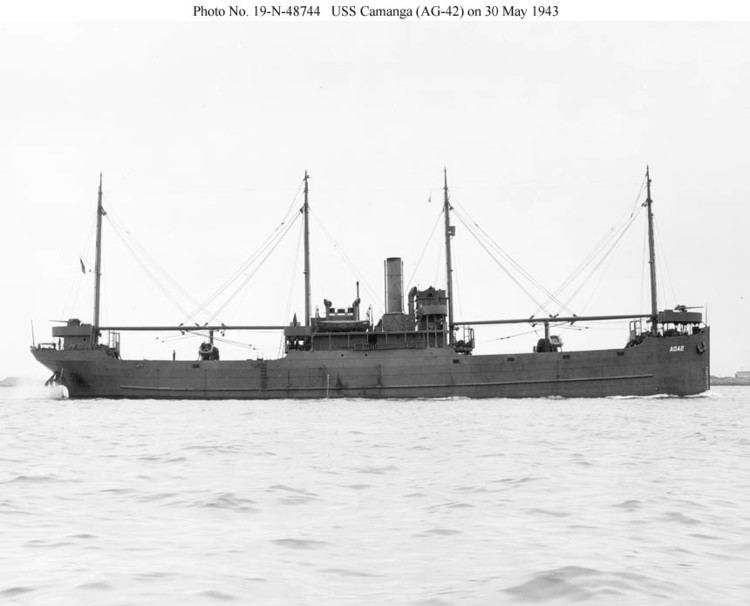Name USS Majaba Completed in 1919 as Meriden Weight 5,151 tons Builder Portland | Laid down date unknown Length 91 m Displacement 4.599 million kg | |
 | ||
Namesake An island of the Philippines Acquired leased by the US Navy as El Capitan Commissioned 23 April 1942 as Majaba (AG-43) | ||
USS Majaba (AG-43/IX-102) was a commercial cargo ship acquired by the U.S. Navy during World War II. She was assigned to operations in the South Pacific Ocean, where, during dangerous operations at Guadalcanal, she was struck by a torpedo and beached. She was eventually salvaged sufficiently to serve as a barracks ship and as a storage ship, until she was finally disposed of post-war.
Contents
Constructed in Oregon
Majaba (AG 43) was built as SS Meriden by Albina Engine & Machine Works, Portland, Oregon, in 1919; acquired by the Navy under charter as SS El Capitan from her owner, E. K. Wood Lumber Co., of San Francisco, California, 23 April 1942; renamed Majaba and commissioned the same day.
World War II service
Majaba completed conversion to a miscellaneous auxiliary 14 May and subsequently steamed to the Hawaiian Islands for cargo runs to islands of Polynesia and the South Pacific Ocean.
Departing Honolulu 24 June, she operated during the next several months out of Honolulu and completed supply missions to Palmyra Island, Christmas Island, and Canton Island. Thence, she reached Efate, New Hebrides, to bolster the vital ocean supply line to American forces engaged in the bitter struggle for control of Guadalcanal.
Majaba departed the New Hebrides 26 October and steamed to meet two supply convoys bound for the Solomon Islands. However, heavy weather prevented the rendezvous, and she returned to Espiritu Santo 29 October. Later that day she sailed once again for Guadalcanal where she arrived 2 November. Screened by USS Southard, she crossed Ironbottom Sound and unloaded cargo at Tulagi that same day.
Guadalcanal operations
Despite the menace of powerful Japanese naval forces, Majaba shuttled cargo between Tulagi and Guadalcanal during the next few days. She arrived off Lunga Point, Guadalcanal, early 7 November; and, while her escort, Woodworth, patrolled for enemy submarines off Lunga Point, she began final unloading operations prior to her planned departure for Espiritu Santo.
Shortly before 0930, lookouts in Lansdowne, anchored near Majaba, spotted the periscope of HA-11 ( Imperial Japanese Navy) followed by two torpedo wakes. One torpedo, which apparently passed under Lansdowne, hit the beach but failed to explode. The other curved toward Majaba and exploded against her starboard side amidships, destroying her engine room and boilers. She settled and listed slightly but did not sink.
While Lansdowne and Woodworth searched for the enemy sub, Bobolink went to Majaba's aid. The tug towed the disabled ship east along the coast of Guadalcanal and beached her that afternoon off the month of the Tenaru River.
Reclassified as IX-102
On 8 January 1943 USS Navajo and Bobolink freed Majaba from her beached position and towed her to Tulagi. Reclassified IX-102 and placed in an in-service status on 1 July 1943, she remained at Florida Island, Solomons, and during the remainder of World War II served as a floating quarters and material storage ship.
Post-war inactivation
Following the end of the war, Majaba was towed to the Philippines. She remained at San Pedro Bay, Leyte, until early in 1946 when she was towed to Subic Bay, Luzon. There, she was placed out of service 14 March 1946 and delivered to War Shipping Administration (WSA) for return to her owner. Her name was struck from the Navy List 28 March 1946.
Honors and awards
Majaba received one battle star for World War II service.
